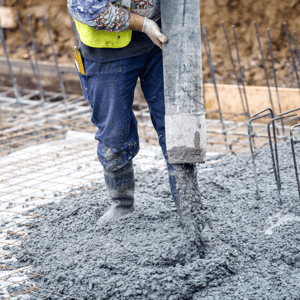If you've ever purchased an older home before, the process is pretty straight forward: you put in an offer, it's accepted, conditions on the sale are eventually removed, and when your possession date arrives, you move in.
During the entire process, you’d be able to see the inside and outside of the house you're buying.
For some, the idea of building your next home may be intimidating if you don’t know what to expect. You’ve fallen in love with a particular model by touring the show home, but how does the process of building a new home work?
To help you, we’ve outlined the home building process below to give you a better idea of what happens after you've decided on the new home and community you want to live in.
1. Approvals
Once you’ve signed the paperwork to officially purchase the home, there will be some approvals that will need to be in place prior to home construction. This may include drafting the home plans, getting municipal building permits and drafting up warranty documents.
In most cases, the drafted plans for your home must be submitted to the land developer of the community you're building in. This is to ensure your home meets the architectural guidelines put in place.
 2. Pouring the Foundation
2. Pouring the Foundation
A crew will dig a hole big enough to pour the foundation for your home. This includes the rough grading that prevents water damage, as well as the foundation walls that will form your basement.
Before a waterproofing membrane is applied onto the foundation walls, the cement will need to cure. This will take some time, during which no further work will be done on your home.
3. Constructing the Shell
Next, the home will be framed, at which point your home will really start to take shape. Often called the shell or skeleton, this is when your base floors, walls, and roof are installed.
It’s at this stage that the various rooms on both floors of your home will start to be identifiable. The roof will also be installed to protect your home from the outdoor elements as much as possible.
4. Installing the Guts of Your Home
After the framing is complete, contractors will enter your home to install pipes and wiring into the walls and ceilings for your home’s major systems, such as the electrical, plumbing, and HVAC. With the roof now installed, lights, switches, and outlets can be installed as well.
 5. Drywall, Floors, Fixtures and Finishes
5. Drywall, Floors, Fixtures and Finishes
It’s at this point that your house becomes a home! They will insulate your home, install flooring, drywall, interior doors, trim, counters and cabinets, and other fixtures and finishes.
You’ll notice a big change from outside your home as the exterior siding is installed. Your home is just about complete at this point, leaving only the remaining work to be outside.
6. Seasonal Outdoor Work
Unlike most of the work that goes into building your home, installing your driveway and sidewalks are dependent on the weather. You'll need to know about seasonal home construction, as the process varies depending on the time of year.
Crews require dry weather in order to complete these outdoor elements of your home, which means these will be installed as the weather allows. Unless your builder has included the landscaping in the price of your home, you will be responsible for installing this yourself.
7. Inspecting the Build
Throughout the process, from pouring the foundation to installing mechanical systems, inspectors from your municipality will inspect your builder’s work to ensure it's being constructed to building and safety laws. These inspections ensure your home is built properly throughout every stage.
8. Walk-Through
The day has finally arrived to see your completed home for the first time! During the walk-through, your builder will explain how to properly use and maintain the mechanical elements of your new home, such as the furnace, water heater, and humidifier.
It's a good idea to be observant during your walk through, as it's your opportunity to spot things that need to be corrected or adjusted. Be sure to inspect all the features and structural elements in your home. Check taps, showers and toilets to ensure they're working properly as well.
If these things aren’t reported during the walk through, the builder is not liable to fix them. Take the time to ensure you're completely happy with your new home.
At the beginning of this entire process, be sure to ask your builder how they plan to keep you updated on the progress of your home. Good builders should allow you to see your home at various milestone stages. While each builder may have a different process, it's important that they provide you updates in some way.
As mentioned above, there will be times during your home’s construction where it looks like no work is being done. This is normal at various points and is nothing to worry about. By understanding how the construction process works, you'll feel confident knowing the end results will be exactly what you expected.
Finding a builder with a smooth and informative process is important. Check out our post on how to choose the best Edmonton home builder to help you decide.




